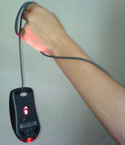
©iStockphoto.com/kozmoat98
Life in the Corporate Theater: Does anything work in Miami? –“So, beyond all the jackhammering that we are hearing through the walls during the meeting, the Internet connection that the hotel is providing is very sketchy.” Things get off to a rough start for Steve in Another day in Miami but seem to improve as the day goes on.
EffectiveMeetings.com: Presentation Disaster Preparation — Lots of great advice including “The Key to a Glitch-free Presentation: Arrive Early. I’ll never forget a major address I gave at a convention many years ago. The program was scheduled to begin at 8 p.m. The committee, good hosts that they were, insisted on taking me out for dinner. Naively, I went along. They promised to get me to the auditorium in plenty of time. Needless to say, we arrived just at the stroke of 8 and I was on. Never again! ”
oboeinsight: That’s The Night When The Lights Went Out In Georgia Sydney — “I’ve been at two performances when the lights have gone out. Once, with San Jose Symphony, Richard Stoltzman played —in the dark and by memory!— Stravinsky’s Three Pieces for Clarinet Solo, while my husband, who was stage manager at the time, quickly set up stand lights so we could continue the full concert. (I guess we had a generator that provided enough power for stand lights.)”

©iStockphoto.com/LeggNet
Recognized Expert: Dealing with a Difficult Participant — “Three minutes into your talk someone takes a cell phone call and carries on a conversation as though they were in the room alone. They’re loud and disturbing. What do you do?”
Stagecraft Journal: ‘Da Rules: Meant for Stagehands and shop crews but there’s a lot here of interest to anyone working at any atge of the presentation process.
Speaking About Presenting: 5 strategies to defuse the audience — “Sometimes your audience needs defusing. You may know ahead of time that the audience is likely to be hostile to your ideas, or there may be a big issue looming over them which distracts them from listening to your presentation. Or they may simply not be that interested in listening to you.”
TJ Walker: What do I do if I make a mistake or forget what I am about to say? — “Let’s say you are in the middle of making a point and suddenly your brain freezes and you can’t remember what to say next. The average presenter will have a look of horror shoot across his face, turn bright red, grimace, apologize to the audience…” and If my allotted time is cut, what should I eliminate from my presentation? — Good advice with this fantastic close — “The foolproof presenter realizes there is never an ideal environment for speaking. There will always be distractions in the form of noise from next door, poor lighting, or noisy people in the back of the room. The foolproof presenter simply sizes up the opportunity given what is available in terms of time and resources and then makes the best of it—every time.”
The Accidental Communicator: 5 Ways To Deliver A Disastrous Presentation — “What me worry? Why bother to practice – you know this stuff inside and out, you’ll just go up there and wing it and the crowd will love you because it will seem more natural and less rehearsed than all the other presenters. Yeah right.”
Control Booth: Risk Assessment Sample — “here is an anonymised version of the latest risk assessment done by the theatre technicians.”
Indezine: PowerPoint Version Hell — “All these issues can be placed under a common umbrella that I’ll call Version Hell – and while it’s no fun being under this umbrella, life can be much more uncomplicated if you are aware of these problems, and ready to look at workarounds and best practices. You might have noticed that I never promised any solutions – that’s because very few of them exist – most of the time, you’ll have to look at workarounds for existing content, and plan with best practices for any new slides you create. As goes the famous saying: an ounce of prevention is worth a pound of cure.”
Fans Of Reality TV: Quick Fixes For Wardrobe Malfunctions.
 A couple weeks ago
A couple weeks ago Well, that something ended up being the right-click option. The MacBook Pro has no right-click button. I could plug in a regular two-button mouse but it seemed too much to do when I already had the receiver for my remote plugged in – and for some reason, the mouse and the remote were not too happy with each other. It wasn’t a happy thought to use my older laptop again – and at this point of time, the older machine seemed like an archaic dinosaur that was so slow (funny how perceptions change in one day).
Well, that something ended up being the right-click option. The MacBook Pro has no right-click button. I could plug in a regular two-button mouse but it seemed too much to do when I already had the receiver for my remote plugged in – and for some reason, the mouse and the remote were not too happy with each other. It wasn’t a happy thought to use my older laptop again – and at this point of time, the older machine seemed like an archaic dinosaur that was so slow (funny how perceptions change in one day).